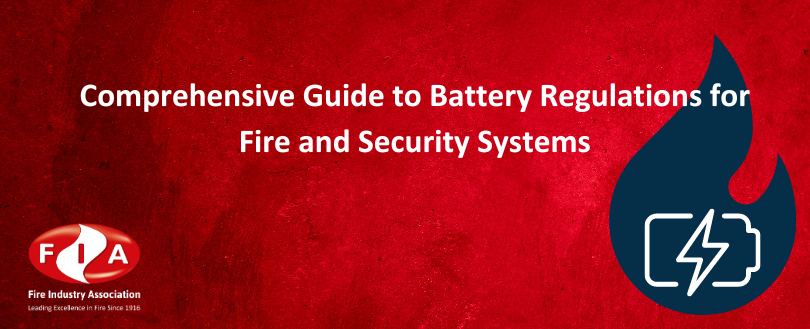
Comprehensive Guide to Battery Regulations for Fire and Security Systems
Like it? Share it!
19 August 2024
Understanding Substance Restrictions
Article 6 of the regulation details the conditions for restricting certain substances, closely aligned with existing REACH (Registration, Evaluation, Authorisation, and Restriction of Chemicals) requirements. Manufacturers already compliant with REACH Substances of Very High Concern (SVHC) and transparent about content declarations to users are currently in compliance with the new regulations.
However, the European Chemicals Agency (ECHA) has recommended further scrutiny of substances used in lead-acid batteries. While lead is currently exempt from REACH restrictions, these recommendations indicate potential future bans on certain chemicals integral to lead-acid battery production. Should these recommendations be adopted by EU Member States, the industry could face a timeline of approximately 45 months to phase out lead-acid batteries, including an 18-month sunset period following a formal 27-month compliance window.
Future Outlook and Potential Exemptions
The outlook for lead-acid batteries remains nuanced. The battery industry has precedents for securing exemptions under specific conditions. For instance, nickel-cadmium batteries, despite being restricted under REACH, have been granted temporary exemptions for particular applications where no feasible alternatives exist. It is anticipated that similar exemptions will be sought and potentially granted for lead-acid batteries, particularly for automotive and industrial applications. Such exemptions could extend the usage of lead-acid batteries for up to seven years, suggesting a phased transition by the early 2030s.
To assist you in navigating these regulatory changes, we have prepared a comprehensive guidance note that offers detailed insights into the EU Battery Regulation and its implications for fire and security systems. This resource includes practical steps for ensuring compliance and preparing for future developments in battery technology and regulation.
Download the guidance note.
Discover how you can make a difference in the fire industry by getting involved with our Councils, Working Groups and Special Interest Groups. Learn more here.
Related news
Related resources
-
Passenger Service Vehicle - Guidance Note
05 September 2023
